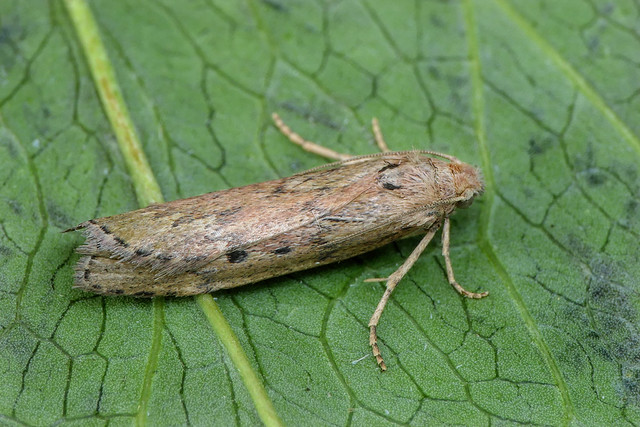Pyralidae

The Crambidae are a large family of over 10,000 species of small to medium-sized moths in the superfamily Pyraloidea, with around 260 species recorded in the UK and over 1,000 in Europe. Until recently considered a subfamily of Pyralidae, they were recognized as a distinct family based on molecular and morphological evidence (e.g., Regier et al., 2012).
Adults have wingspans of 10–50 mm, with broad, often triangular forewings held flat or tent-like over the abdomen at rest. The labial palps are typically long and upcurved, forming a prominent snout—hence the common name “snout moths.” Many species are highly polymorphic, with variable wing patterns that complicate identification. Most are nocturnal, but some are diurnal.
Larvae are stem borers, leaf rollers, web-formers, or aquatic, feeding on grasses, sedges, crops, or aquatic plants. Several are agricultural pests, including Ostrinia nubilalis (European corn borer) and Chilo suppressalis (rice stem borer).
The family includes subfamilies such as Crambinae (grass moths), Spilomelinae (with Udea, Nomophila), and Pyraustinae (with Pyrausta, Ostrinia). Recent phylogenetic studies continue to refine subfamily boundaries, especially in tropical lineages.











